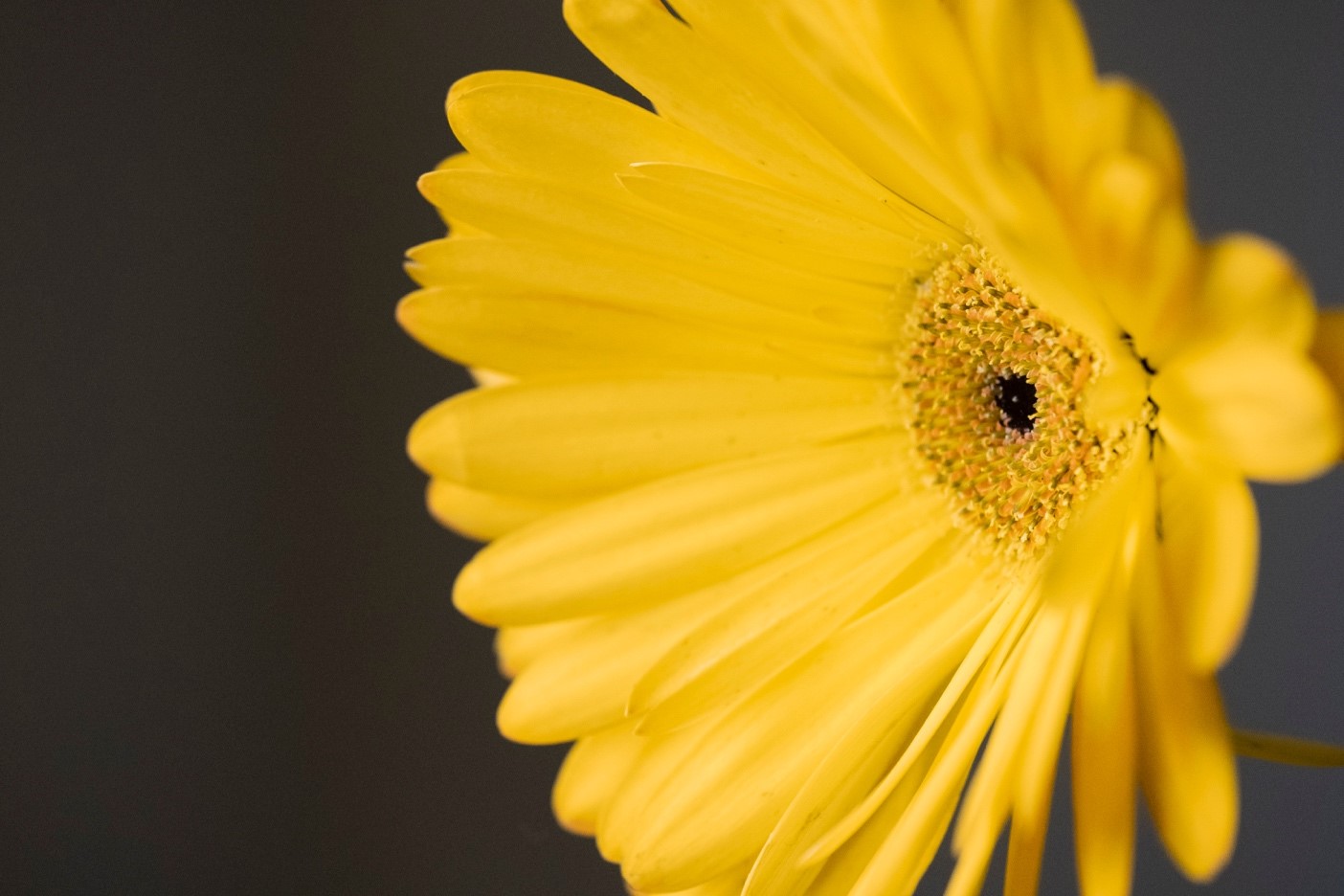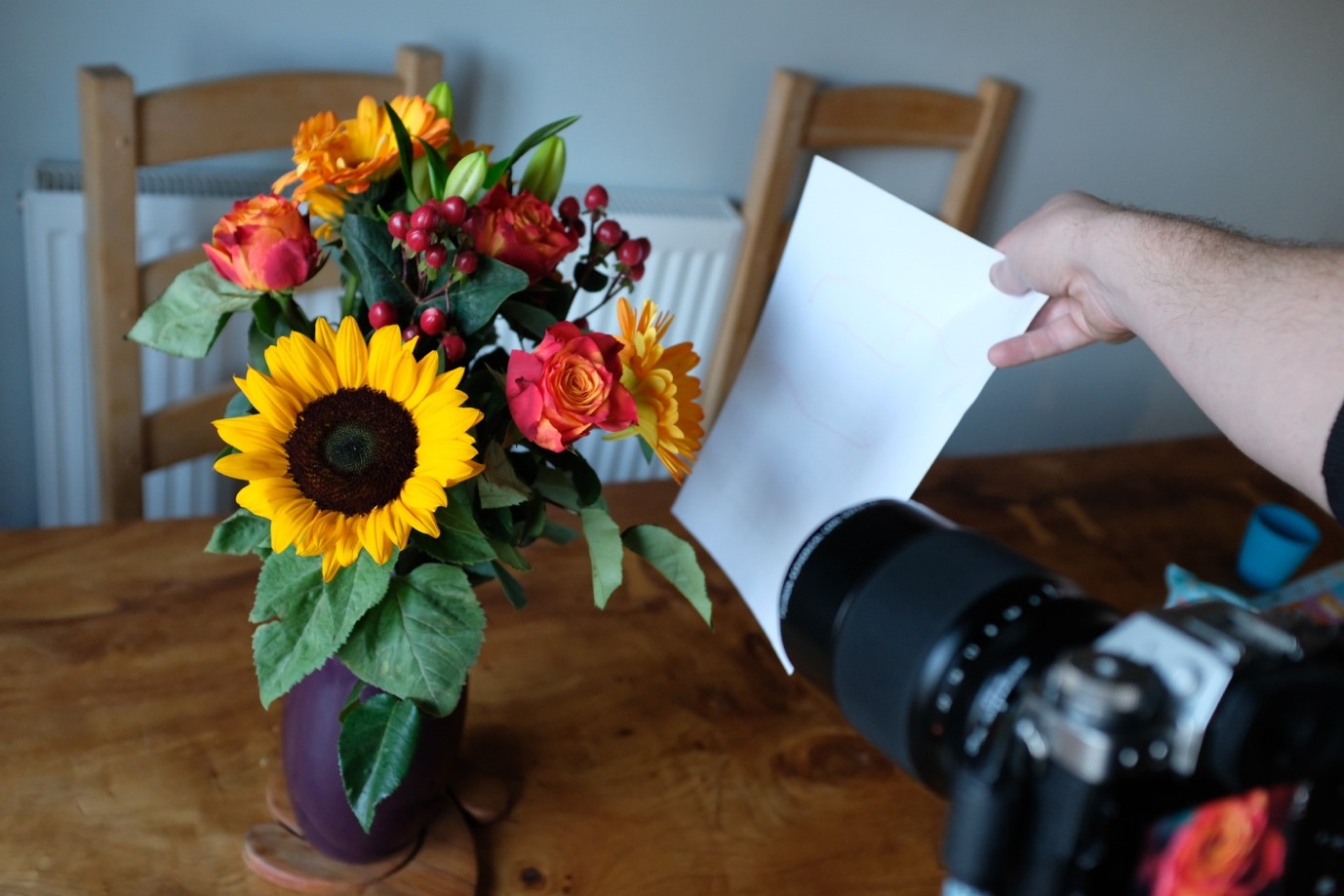Flowers have been a popular subject for artists for centuries – and continue to be for photographers today. It’s not surprising really as flowers have shape, colour and texture – everything you need to make still-life pictures that are good enough to grace any living room wall.
Shooting ‘flower portraits’ is a really calming, immersive process. If you’re a fan of mindfulness, then we think you’re really going to enjoy giving this a try. The process takes very little by way of fancy lighting or studio facilities; we shot these images in a kitchen using a £10 bunch of flowers from a supermarket and the diffuse light from a north-facing patio window. We used a piece of mount board as a background and a sheet of A4 paper as a reflector.
The one piece of specialist equipment that can come in handy for this type of photography is a macro lens, which lets you get very close and fill the frame with colour. There are two macro lenses in the X Series. We used the FUJINON XF80mmF2.8 R LM OIS WR Macro here as it offers life-size 1:1 reproduction of images (ie the same size on your camera’s sensor as it is in real life), while the more compact XF60mmF2.4 R Macro delivers half life-size images and take-anywhere portability.
That said, you can shoot some great results with the standard zoom that comes with your FUJIFILM camera, or other close-focusing lenses, like the XF50mmF2 R WR. The secret is playing around with what you have on hand and not being afraid to experiment. Here are a few more tips to get you going:
Fill the frame
This is not a very subtle form of photography. Get in there and fill the frame with as much colour and texture as you can. Look for swirls and patterns, and try to get this to chime with the rules of composition that you may be familiar with already, such as the rule of thirds and the golden spiral.
Keep it simple
A wise person once said: ‘A designer knows perfection has been achieved not when there is nothing left to add, but when there is nothing left to take away’. It’s the same with still-life photography. Simplify your composition by removing things from the frame until you’re left with the basics. The results will have a purity and simplicity, which is beauty in itself.
Use the tilting LCD
This is a great time to use the tilting LCD on your X Series camera, if it has one. This lets you stand back and see your composition as a living print right in front of you. You won’t have to bend down in some contorted position just to get a clear view!
Don’t forget about black & white
Flowers are pretty colourful beasts, so it may not occur to you to photograph them in black & white. But with all of the colour removed from a picture, you are free to concentrate on the patterns and shapes on display without distraction. Experiment with the different black & white Film Simulation modes, too, particularly the red, yellow and green variations – each of which will give a different result.
Try shallow depth-of-field
Getting enough depth-of-field to render a whole flower sharp is tricky when shooting macro photography, since the depth-of-field gets smaller the closer you get to your subject. But instead of struggling against this, why not embrace it and find a composition that works with very shallow depth-of-field?
You want to shoot across a flower head if possible, and try out different apertures to see just how much (or little) of the scene you want to be sharp.
Make light work for you
The human eye is a wonderful thing, but sometimes it gives us a false sense of what we can record on camera. We see a much wider dynamic range than our cameras do: more detail in bright highlights and dark shadows. If you are finding this a problem when using a light source positioned to one side, what you need is a reflector.
This can be as high-tech or low-tech as you like. Many excellent reflectors are on offer from specialist lighting companies, but you can also try the humble sheet of A4 printer paper, or a scrunched-then-unscrunched piece of aluminium foil. Hold this opposite your light source, close to an area that looks a little too dark, and you’ll see instant results.
Shoot Raw, then have some fun!
JPEG files look great straight out of FUJFIILM X Series cameras, but Raw files offer more scope for post-processing and retouching, which can lead to some truly creative results. For instance, it’s easy to change colours, saturation and brightness to make it look like you were photographing a completely different flower. Raw file editing is non-destructive, too, which means you can play around with the .raf file as many times as you like – experiment and get creative with your pictures!






















































